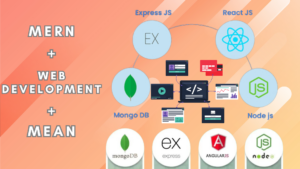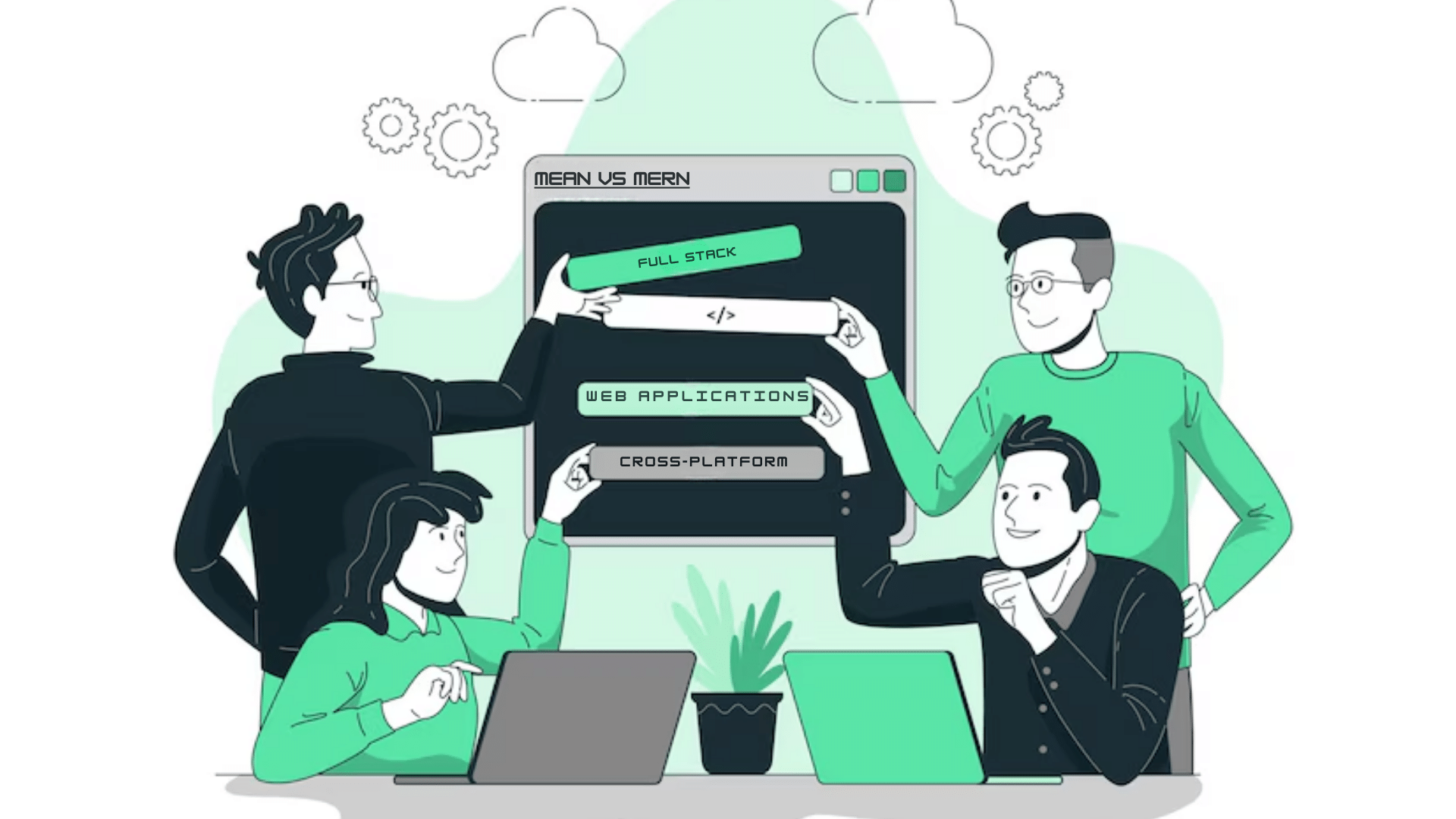
In today’s dynamic digital landscape, responsive design and cross-platform development have become indispensable for creating engaging and user-friendly web applications. Harnessing the potential of MERN (MongoDB, Express.js, React.js, Node.js) and MEAN (MongoDB, Express.js, AngularJS, Node.js) stacks, developers can unlock a world of possibilities in delivering seamless experiences across devices and platforms. Let’s delve into the key aspects of responsive design, cross-platform development, maximizing user engagement, ensuring security, and optimizing performance with MERN and MEAN stack applications.
Harnessing the Potential of Responsive Design
The Evolution of Responsive Design
Responsive design has evolved significantly over the years, adapting to the proliferation of mobile devices and varying screen sizes. From static layouts to fluid grids and media queries, the journey of responsive design reflects the ever-changing needs of users in an increasingly mobile-first world.
Key Principles for Creating Responsive UI/UX
Creating a responsive UI/UX involves adhering to key principles such as scalability, flexibility, and consistency across devices. By prioritizing content hierarchy, intuitive navigation, and touch-friendly interactions, developers can ensure a seamless experience for users across all devices.
Mobile-First Approach: Designing for Small Screens
Embracing a mobile-first approach entails designing for small screens first and then scaling up for larger devices. By prioritizing mobile users’ needs and optimizing performance for low-bandwidth environments, developers can create responsive designs that cater to the majority of users accessing the web on their smartphones.
Tips for Optimizing Responsive Websites and Applications
Optimizing responsive websites and applications involves optimizing images, minimizing HTTP requests, and leveraging CSS preprocessors to streamline code. By implementing lazy loading, asynchronous loading, and content delivery networks (CDNs), developers can enhance page loading speed and overall performance, thereby improving user experience and retention.
Exploring Cross-Platform Development in MERN and MEAN Stack

Cross-platform development is a game-changer in the world of software development, enabling applications to run seamlessly across various operating systems and devices. With the rise of MERN and MEAN stack technologies, developers have unlocked the potential to streamline cross-platform development processes.
When it comes to choosing the right technology stack for cross-platform development, MERN (MongoDB, Express.js, React.js, Node.js) and MEAN (MongoDB, Express.js, AngularJS, Node.js) stand out as popular choices. These stacks offer developers a unified codebase and shared libraries, facilitating the development of cross-platform solutions with efficiency and ease. In the bustling tech landscape of India, where innovation thrives and talent abounds, numerous software development companies excel in delivering top-notch solutions. Among them, finding the best website development company in India can be a daunting task. However, by leveraging the expertise of leading software development companies, businesses can ensure the success of their cross-platform projects.
Leveraging MERN and MEAN Stack for Cross-Platform Solutions
MERN and MEAN stacks offer robust frameworks and libraries for building cross-platform applications. By utilizing technologies like React Native and Ionic, developers can create native-like experiences for iOS, Android, and web platforms, maximizing code reuse and minimizing development time.
Advantages and Challenges of Cross-Platform Development
Cross-platform development offers advantages such as cost-effectiveness, faster time-to-market, and wider reach across multiple platforms. However, challenges such as performance optimization, platform-specific limitations, and UI/UX inconsistencies need to be addressed to ensure a seamless user experience across all devices.
Best Practices for Developing Cross-Platform Apps with MERN and MEAN
Best practices for developing cross-platform apps with MERN and MEAN stack include following platform-specific design guidelines, optimizing performance for each target platform, and conducting thorough testing on real devices. By embracing modular architecture, component-based development, and continuous integration, developers can streamline the cross-platform development process and deliver high-quality applications that meet users’ expectations.
Maximizing User Engagement with Interactive Features
Importance of Interactive Features in Modern Applications
Interactive features play a crucial role in engaging users and enhancing the overall user experience. By incorporating elements such as animations, gestures, and real-time updates, developers can create immersive experiences that keep users coming back for more.
Implementing Dynamic User Interfaces with MERN and MEAN
MERN and MEAN stack offer powerful tools and libraries for implementing dynamic user interfaces. By leveraging technologies like React.js and AngularJS, developers can create interactive components, stateful UI elements, and seamless transitions that captivate users and drive engagement.
Enhancing User Experience with Real-Time Updates
Real-time updates enable users to receive instant feedback and updates without having to refresh the page. By integrating technologies like WebSockets and Server-Sent Events (SSE), developers can deliver real-time notifications, live chat functionality, and collaborative features that enhance user experience and foster user engagement.
Leveraging Animation and Multimedia for Engagement
Animation and multimedia elements add visual appeal and interactivity to web applications. By incorporating CSS animations, SVG graphics, and video/audio content, developers can create engaging interfaces that communicate information effectively and delight users with interactive storytelling.
Securing Your MERN and MEAN Stack Applications
Overview of Security Risks in Web Development
Web development poses various security risks, including cross-site scripting (XSS), SQL injection, and data breaches. By understanding these risks and adopting security best practices, developers can mitigate vulnerabilities and protect sensitive data from unauthorized access.
Strategies for Securing MERN and MEAN Stack Applications
Securing MERN and MEAN stack applications involves implementing authentication mechanisms, input validation, and data sanitization to prevent security vulnerabilities. By adopting HTTPS encryption, using secure authentication protocols, and implementing role-based access control (RBAC), developers can safeguard applications against common security threats.
Implementing Authentication and Authorization Mechanisms
Authentication and authorization mechanisms play a critical role in ensuring that only authorized users can access protected resources. By implementing techniques such as JSON Web Tokens (JWT), OAuth, and session management, developers can authenticate users securely and enforce access controls based on user roles and permissions.
Best Practices for Data Encryption and Secure Communication
Data encryption and secure communication are essential for protecting sensitive information transmitted over the network. By using HTTPS/TLS encryption, encrypting sensitive data at rest, and implementing secure communication protocols, developers can ensure that data remains confidential and integrity is maintained throughout its lifecycle.
Performance Optimization Techniques for MERN and MEAN Stack
Understanding Performance Metrics and Bottlenecks
Performance optimization begins with understanding key metrics such as page load time, time to first byte (TTFB), and rendering performance. By identifying performance bottlenecks and optimizing critical rendering paths, developers can improve overall site speed and responsiveness.
Techniques for Improving Loading Speed and Responsiveness
Improving loading speed and responsiveness involves optimizing assets, minimizing render-blocking resources, and prioritizing above-the-fold content. By compressing images, minifying CSS/JavaScript files, and leveraging browser caching, developers can reduce page load times and enhance user experience across devices.
Caching Strategies for Enhanced Performance
Caching strategies such as browser caching, server-side caching, and content delivery network (CDN) caching can significantly improve performance by reducing server load and network latency. By caching static assets, dynamic content, and API responses, developers can deliver content quickly and efficiently to users worldwide.
Monitoring and Tuning Application Performance
Monitoring and tuning application performance is an ongoing process that involves using tools like Google PageSpeed Insights, Lighthouse, and New Relic to analyze performance metrics and identify areas for improvement. By conducting regular performance audits, implementing performance budgets, and optimizing critical rendering paths, developers can ensure that their applications perform optimally and provide a seamless user experience.
Conclusion: Elevate Your Web Development Game with MERN and MEAN Stack
In conclusion, mastering responsive design and cross-platform development with MERN and MEAN stack opens up a world of possibilities for creating engaging, user-friendly web applications. By adhering to best practices, leveraging cutting-edge technologies, and prioritizing user experience and security, developers can elevate their web development game and deliver high-quality applications that meet the needs and expectations of today’s users. As a leading website development company in India, we specialize in MERN and MEAN stack development, offering top-notch solutions tailored to your specific requirements. Contact us today to hire professional MERN stack developers in India and take your web development projects to new heights.
In conclusion, mastering MERN and MEAN Stack development empowers you to elevate your web development game to new heights. However, navigating the complexities of full-stack development can be daunting, which is where outsourcing comes into play as a game-changer. Outsourcing a dedicated development team offers a cost-efficient and effective solution for businesses looking to harness the expertise of skilled developers without the overhead of hiring in-house talent.
In India, outsourcing thrives as a powerhouse of talent, with a plethora of experts in MERN and MEAN development readily available. By partnering with an outsourcing company in India, you gain access to a pool of seasoned professionals who excel in building robust and scalable web applications using these cutting-edge technologies.
Outsourcing your MERN and MEAN development projects to India not only ensures access to top-tier talent but also offers numerous advantages such as cost savings, faster time-to-market, and scalability. With a dedicated team of experts handling your development needs, you can focus on core business activities while enjoying the benefits of high-quality, cost-effective solutions.
In summary, outsourcing MERN and MEAN development to India presents a strategic opportunity to leverage the expertise of skilled professionals and accelerate your web development initiatives. Whether you’re a startup looking to launch a new product or an enterprise seeking to scale your existing applications, outsourcing offers a pathway to success in today’s competitive digital landscape.





Leave a Reply